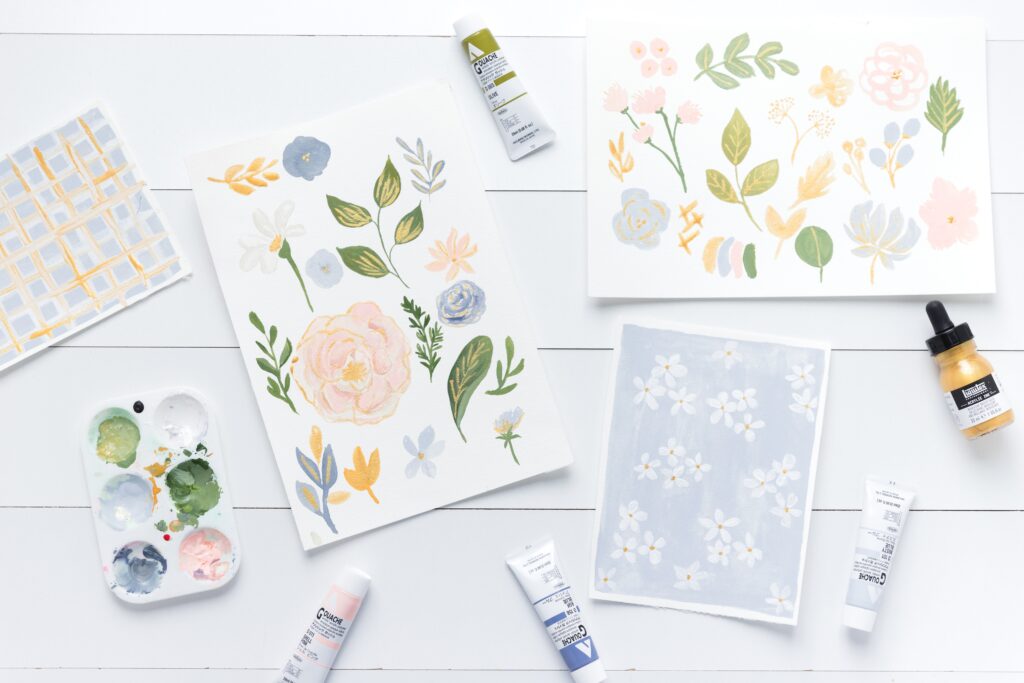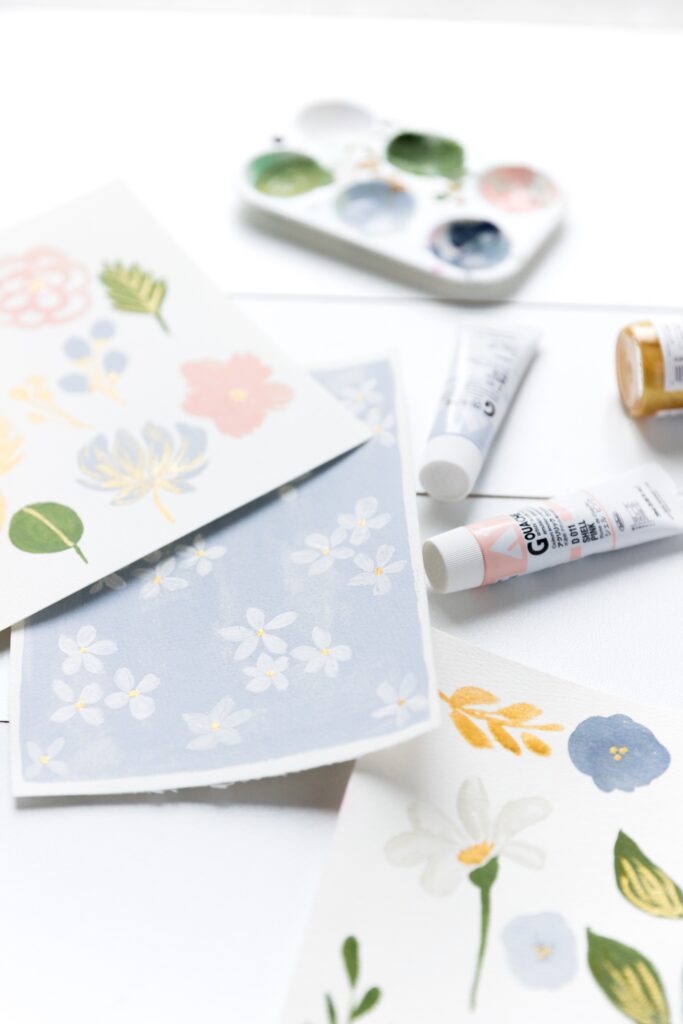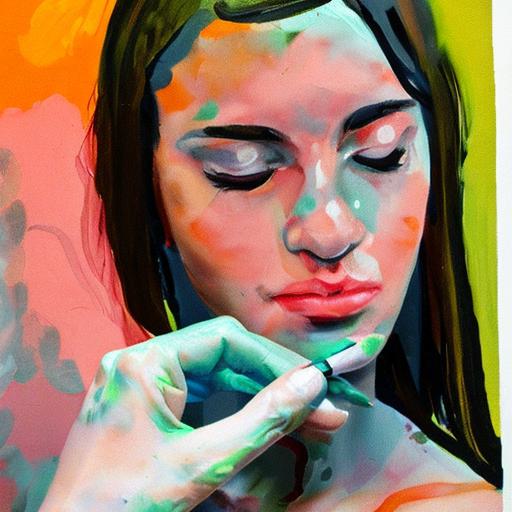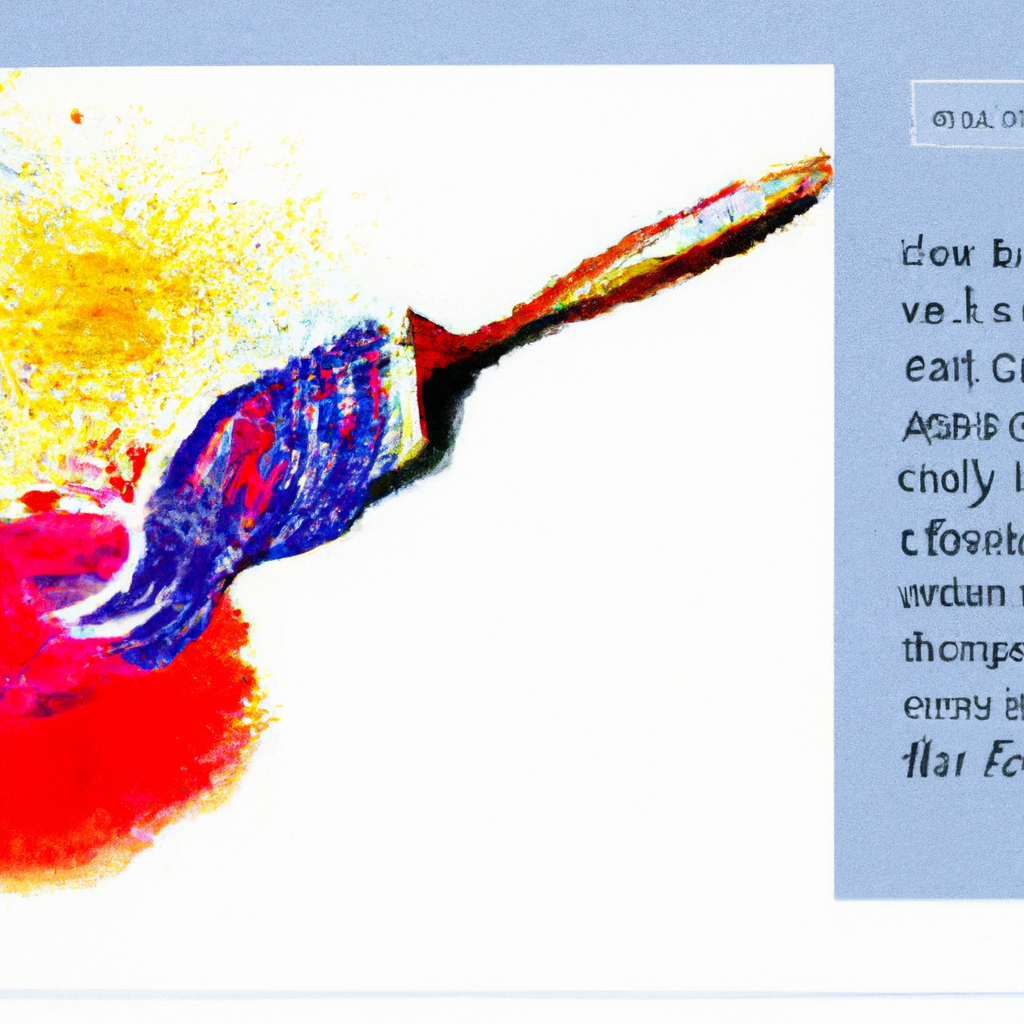Gouache paint, with its vibrant colors and matte finish, has gained popularity among artists for its versatility and ease of use. However, when it comes to using this medium on the skin, a crucial question arises: Is gouache paint safe for such application? This article aims to examine the potential risks and safety concerns associated with using gouache paint on the skin.
By exploring the composition of gouache paint and considering professional advice, we will provide you with the necessary information to make an informed decision about its use on your skin.

This image is property of images.unsplash.com.
What is Gouache Paint?
Gouache paint, also known as opaque watercolor, is a versatile artistic medium that originated in the late 18th century. It is a type of paint that contains a high pigment concentration, resulting in vibrant and opaque colors. Unlike traditional watercolors, gouache paint dries quickly to a matte finish, making it suitable for both fine art projects and illustrative work.
Composition of Gouache Paint
Gouache paint shares similarities with both watercolors and acrylic paints. It is water-soluble like watercolors, but it also contains binders that give it a thicker and more opaque consistency, similar to acrylic paints. The unique composition of gouache paint allows for layering and blending techniques, making it a popular choice among artists.
Ingredients in Gouache Paint
Pigments
The main ingredient in gouache paint is pigments. Pigments are finely ground particles that give the paint its color. Gouache paints typically contain a wide range of pigments, allowing artists to create a vast spectrum of shades and tones. These pigments can be natural minerals or synthetic compounds carefully selected for their vibrant hues.
Binders
Binders are substances that hold the pigments together and adhere them to the painting surface. In gouache paint, the most commonly used binder is gum arabic, a natural resin extracted from the sap of certain acacia tree species. Gum arabic imparts a smooth and consistent texture to the paint, allowing for easy application and blending.
Fillers
Fillers are added to gouache paint to enhance its opacity, improve coverage, and control the paint’s consistency. Common fillers used in gouache paints include calcium carbonate, kaolin clay, and talc. These fillers help ensure that the paint dries to a solid and opaque finish, ideal for achieving vibrant and flat color effects.
Additives
Additives are additional substances added to gouache paints to improve their performance and stability. These can include preservatives to prevent mold growth, wetting agents to help the paint spread more evenly, and anti-settling agents to prevent the pigment from settling at the bottom of the container. Manufacturers carefully select and balance these additives to ensure the gouache paint is of high quality and can be used effectively by artists.
Hazardous Ingredients in Gouache Paint
While gouache paint is generally considered safe for use, there are certain hazardous ingredients that may be present in some formulations. These hazardous ingredients can pose health risks if proper safety precautions are not taken. It is crucial to be aware of these ingredients and understand the potential hazards associated with their use.
One such hazardous ingredient is heavy metals, which can be present in certain pigments used to create specific colors. Cadmium, lead, and chromium are examples of heavy metals that may be present in gouache paint. Exposure to these metals can lead to various health issues, such as skin irritations, respiratory problems, and even long-term toxicity. It is essential to check the specific pigment composition of gouache paints and opt for formulations that use safer alternatives whenever possible.

This image is property of images.unsplash.com.
Safety Precautions for Gouache Paint
To ensure safe usage of gouache paint, it is important to follow some safety precautions. These precautions can minimize the risk of exposure to hazardous ingredients and protect both the artist and their environment.
Avoiding Ingestion
Gouache paint should never be ingested as it may contain harmful substances. Artists should refrain from eating, drinking, or smoking while using the paint and should wash their hands thoroughly after each painting session. Additionally, it is crucial to store gouache paints out of reach of children or pets to prevent accidental ingestion.
Skin Protection
When working with gouache paint, it is advisable to protect your skin by wearing gloves, especially if you have a known sensitivity to certain ingredients. This can minimize direct contact between the paint and your skin, reducing the risk of irritation or allergic reactions. If any paint does come into contact with your skin, it should be promptly washed off with soap and water.
Proper Ventilation
To avoid inhaling potentially harmful fumes or particles, it is best to work in a well-ventilated area or utilize an exhaust fan. Proper ventilation helps remove any volatile compounds that may be released from the paint during application or drying, reducing the risk of respiratory irritation or toxicity.
Cleaning and Disposal
After using gouache paint, it is important to clean all brushes, palettes, and other tools thoroughly. Rinse brushes with water until the water runs clear, ensuring that all traces of paint are removed. Dispose of any leftover paint or waste materials according to local regulations, as some components may be considered hazardous. Avoid pouring leftover paint or rinse water down the drain, as it can contaminate water sources.
Skin Sensitivity to Gouache Paint
While gouache paint is generally safe for use, certain individuals may experience skin sensitivity or adverse reactions when in contact with the paint. This can vary depending on individual factors such as skin type, existing allergies, or sensitivity to specific ingredients. It is essential to be aware of the potential risks and take necessary precautions to prevent skin irritation or allergic reactions.
Potential Risks and Allergic Reactions
Irritation and Dermatitis
Exposure to certain ingredients in gouache paint can cause skin irritation or dermatitis in sensitive individuals. Symptoms may include redness, itching, or rash in the affected area. Artists with pre-existing skin conditions or known sensitivities should be particularly cautious and consider using alternative paints that are specifically designed for skin application.
Toxicity and Harmful Effects
Certain pigments used in gouache paints can contain heavy metals or other toxic substances that may pose health risks if absorbed through the skin. Prolonged or repeated exposure to these substances can lead to adverse health effects, including long-term toxicity. It is important to read product labels and choose gouache paints that are formulated with non-toxic and safe pigments whenever possible.
Allergic Reactions
In some cases, individuals may develop allergic reactions to one or more ingredients in gouache paint. These reactions can range from mild to severe and may include symptoms such as itching, hives, swelling, or difficulty breathing. If you experience any allergic reactions after using gouache paint, discontinue use immediately and seek medical attention if necessary. Allergic individuals may need to explore alternative paints suitable for their skin type.
Safety Testing for Gouache Paint on Skin
Patch Test
Before applying gouache paint directly to the skin, it is advisable to conduct a patch test on a small area. Apply a small amount of the paint on the inner forearm or behind the ear and leave it on for 24 to 48 hours. If no adverse reactions occur during this period, it is generally considered safe to use the paint on the skin.
Skin Compatibility Tests
For individuals with known skin sensitivities, it may be necessary to perform additional compatibility tests. Apply a small amount of the gouache paint on a less sensitive area of the skin, such as the forearm or the back of the hand. Observe the area for any signs of irritation or allergic reactions for at least 24 hours. If no adverse effects occur, it can indicate that the paint is compatible with your skin.
Alternative Paints for Skin Application
Face and Body Paints
Face and body paints are specifically formulated for use on the skin and are extensively tested for safety. These paints are available in a wide range of colors and finishes, allowing artists to achieve similar effects to gouache paint. Face and body paints are designed to be non-toxic, hypoallergenic, and easily removable. They are an excellent alternative for individuals with sensitive skin or concerns about the safety of gouache paint.
Water-based Makeup
Water-based makeup products, such as water-based face paints or theatrical makeup, can also be used for skin application. Similar to face and body paints, water-based makeup is formulated to be safe for use on the skin and can provide a wide variety of colors and effects. It is important to choose water-based makeup products that are designed for skin use and labeled as non-toxic.
FDA-compliant Cosmetic Paints
For those seeking a professional-grade option, FDA-compliant cosmetic paints are available for various artistic purposes, including body painting and special effects makeup. These paints adhere to strict safety regulations set by the U.S. Food and Drug Administration (FDA) and are tested for skin compatibility. They are often used by professional makeup artists and performers, ensuring high safety standards and excellent results.
Conclusion
Gouache paint is a popular artistic medium that offers vibrant colors and versatile application techniques. While generally safe for use, it is essential to be aware of the ingredients and potential risks associated with gouache paint, particularly for individuals with sensitive skin or existing allergies. By taking proper safety precautions, such as avoiding ingestion, protecting the skin, ensuring proper ventilation, and following appropriate cleaning and disposal procedures, the risks can be minimized. In cases of skin sensitivity or concerns about potential hazardous ingredients, alternative paints specifically formulated for skin application, such as face and body paints or FDA-compliant cosmetic paints, can be considered. Always prioritize safety and choose products that are suited for your individual needs and circumstances.



